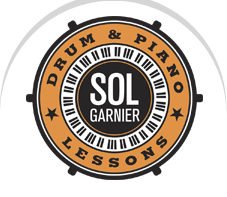When I first started to teach, I was doing technique a certain way, the way I was taught. At the conservatory or at Berklee, I learnt how to hold a pair of sticks, get some speed, do some combination of stroke, etc. And all of that is fine and great.
So, when I got my first student, I told them to practice their technique the way I was taught. I thought it was the only way.
It wasn’t.
You see, a certain technique like a C scale on the piano, can be played and studied up and down the keyboard. You start at the bottom, you go to the top, and back to the bottom. And again. And again. And it’s great for me because I’m a bit obsessive and I don’t mind repeating the same thing a million times. But not every body is built like me.
So?
So, I started to develop different ways of doing the C scale. I could go 2 octaves alternating long notes with short one, as in “looong-short-looong-short”. That’s a change. Or three octaves going soft to loud and back to soft. I like that one. Or do it in a shuffle way (if you don’t know what I mean, I know an excellent teacher). Or playing every note as short as possible. Then I could combine these different ways: soft to loud alternating long and short notes. The possibilities start to open up. That C scale is now far from boring. And, bonus, it helps me explore different aspects of musicality.
I developed almost all of my exercises that way. It provides me with an alternative to the regular ways of teaching nimbleness and versatility on the instrument. In drums, the single stroke roll (One strike per hand) can be orchestrated into fun patterns, odd numbers, embellished with grooves, speed up with the use of subdivisions.
It also helps me cater to the personality of the student I’ve got in front of me. Some prefer flowing on the drum set in long patterns, some prefer counting, some love to analyse everything while others asks for harder and harder challenges.
All I know is this: playful technique makes it seems like there is no work behind it. That’s all that matters. 
